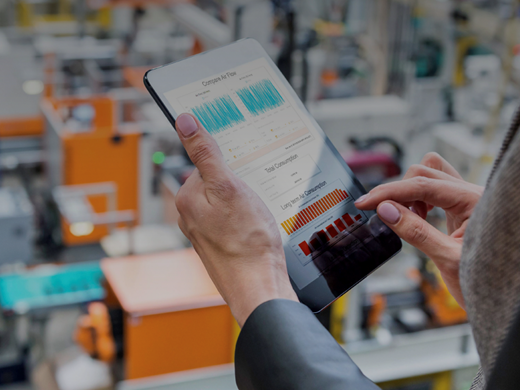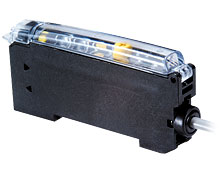Photoelectric Optical Sensors Boost Quality and Efficiency
Industrial sensors serve as the eyes and ears of industrial processes and, as manufacturers continue to add automation in an effort to increase efficiency and quality, the use of sensors is expected to grow. Photoelectric optical sensors, especially, are quickly becoming a favored device as they provide many advantages and execute multiple tasks in harsh environments and applications where other sensor types fail to perform.
As such, the photoelectric sensor market was valued at $1.5 billion in the U.S. in 2021 and is expected to double in size by 2030, according to a recent report by Global Market Insights. This blog will explore the reasons why more and more manufacturers are turning to photoelectric sensors to enhance their factory automation, step up production efficiency and raise product quality.
What are Photoelectric Optical Sensors?

A photoelectric optical sensor is a rugged, yet sensitive device that is designed to detect a change in light intensity. In doing so, these sensors are used to detect the presence or absence of an object, as well as changes in surface conditions. They operate via a light source (typically an LED or laser), a receiver, a signal converter and an amplifier. Relatively inexpensive, photoelectric optical sensors offer sensing ranges and abilities that surpass many other types of sensors; small sizes;
multiple configurations and sensing modes; and a variety of housings that make them suitable for the dirty, dusty environments typically found in industrial facilities.
Photoelectric optical sensors operate via the following technologies:
LED Sensors
LED-based sensors use LED as the light source and are used to sense opaque and transparent objects and parts in contaminated environments. They can accurately count parts, sense small parts arranged in a non-repeatable position, identify parts that may be reflective and detect parts in a defined depth-of-field.
Laser Sensors
The use of lasers as a light source allows laser-based technologies to provide excellent and repeatable accuracy in many applications, especially those where high-accuracy measurement is required.
Fiber Optic Sensors
Fiber optic-based devices offer high performance in harsh, dirty and confined applications. They are also successful in environments where vibration and shock, high heat, wetness and corrosion prohibit the use of other sensing technologies and they excel at sensing very small objects.

Applications for Photoelectric Optical Sensors
Not only are photoelectric sensors rugged enough for challenging environments, but they can perform tasks that traditional sensors can’t manage, such as identifying color, sensing proximity or distance and measuring thicknesses. For this reason, they are finding increasing use in many applications in a variety of industries from food processing to semiconductor manufacturing to material handling to packaging where they serve as the eyes of the machine to control machine functionality and, as a result, help boost product quality and production efficiency.
Photoelectric optical sensors are commonly used for the following tasks:
- Inspecting objects on production lines or conveyors: Because photoelectric sensors can measure the size of objects on a moving production line or conveyor, they can be used to identify defects and issues such as missing or mismatched bottle closures, making them suitable for use in food, beverage and pharmaceutical operations. Their ability to detect the presence or absence of a part or product also permits photoelectric optical sensors to count to small objects as they move from a conveying system into a package or bag, ensuring consistency, quality and accuracy in packaging operations. And, they can perform these tasks with more accuracy, consistency and efficiency than human inspectors.
- Detecting colors: The ability of photoelectric sensors to detect colors means they can be used in printing and packaging applications where they may detect the presence (or absence) of properly aligned labels or perform other functions, such as differentiating one colored product from another on a moving conveyor or assembly line, helping ensure accuracy and product quality.
- Position and object sensing: Robotic pick and place equipment and automated warehouses rely on photoelectric sensors for position and object sensing to improve the accuracy, efficiency and safety of the operation.
Photoelectric Sensors Improve Quality and Production Efficiency
The ability of photoelectric optical sensors to detect and sense objects of all kinds, even challenging materials such as those that are transparent, opaque and reflective, helps manufacturers provide consistent quality and reduce scrap and rework in applications where other sensors won’t suffice or where manual inspections reduce the efficiency, consistency and quality of the operation. And, because photoelectric optical sensors provide no-contact sensing in a rugged package, they can be used in virtually any setting and application to detect objects, labels, colors, quantities and quality where other sensor types may fail frequently or damage sensitive products.
The long service life, high resolution and impressive sensing range make them reliable and accurate, further enhancing quality control, while also reducing downtime, machine stoppages and scrap, even in harsh industrial environments and difficult applications.
Photoelectric optical sensors are the optimal sensing solution for today’s highly automated facilities because they offer a low-cost sensing method that is suitable for use in challenging environments and applications, helping to enhance quality and boost production efficiency. For more information on selecting the appropriate photoelectric optical sensing technology for your operation, please contact Sensors Incorporated.
